From linguistics to climate studies, Alzheimer’s research to the history of women’s rights, undergraduates will display their scholarship at the upcoming fall Undergraduate Research Symposium. Hosted by Undergraduate Research & Fellowships, the symposium will take place on Friday, October 13, from 10:30 a.m. to noon in Roone Arledge Auditorium. Here, we asked eight students to preview their projects.
Sarah Bryden CC’26
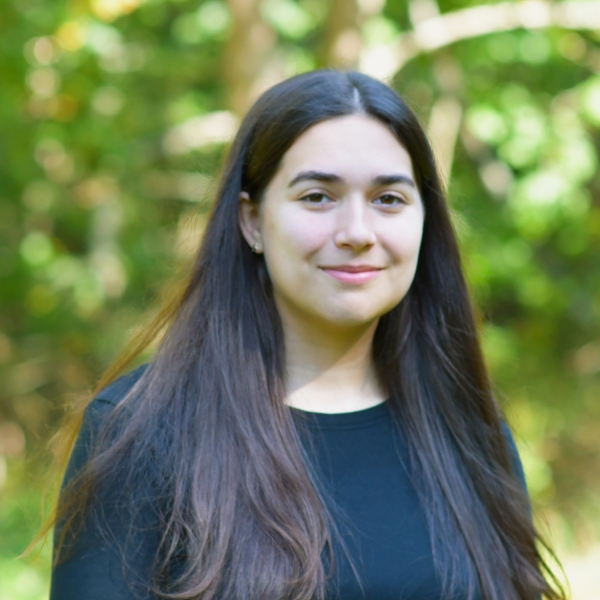
Major: Linguistics
Research topic: I explored language mixing in contemporary Yucatec Maya and Quechua rap. Specifically, I looked at the ways artists mix Indigenous language with the dominant colonial language, Spanish (and occasionally English). The project primarily involved transcribing and translating eight songs, four that mixed Quechua and Spanish, and four that mixed Maya and Spanish.
Why I chose it: I’ve been a fan of artists like Pat Boy and Renata Flores for some time, as a result of studying Maya and Quechua. While listening, I noticed tension between the inclusion of Spanish lyrics and the songs’ frequent messages about Indigenous pride. The Laidlaw [Undergraduate Research and Leadership Scholars] Program presented a wonderful opportunity to explore this, and to engage more deeply with music that I enjoy.
Biggest takeaway: Because hip-hop is relatively modern and youth-oriented, and is an American export, I was not expecting the influence of traditional Maya and Quechua poetics to be so visible in the lyrics I examined. However, in many of the songs I translated, I was able to see the influence of both American hip-hop poetics (for example, an emphasis on rhyme) and Maya/Quechua poetics (for example, a use of parallelism). This underscores a broader philosophy behind both Maya and Quechua hip-hop, which is concerned with changing the common perception of Indigenous culture as frozen in time.
Daniela Palacios CC’26
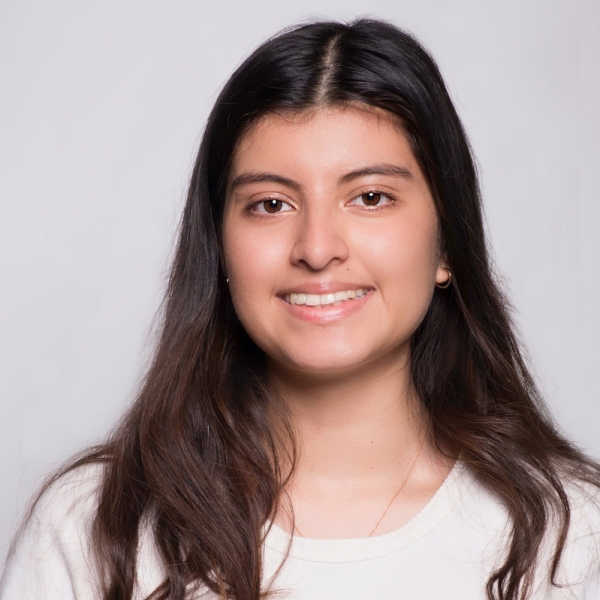
Major: Political Science
Research topic: My research focuses on emerging adults who are pursuing higher education while incarcerated, conducted under the guidance of the Columbia Justice Lab’s esteemed Emerging Adult Justice Project and its director, Lael Chester. Emerging adults — understood as individuals who are 18–25 — constitute a distinct developmental category. The goal was to understand the potential of higher education as a transformative tool for incarcerated young people to reshape their future and find their place in their communities.
I conducted four in-depth exploratory interviews with individuals from New York, Pennsylvania and Massachusetts who enrolled in college-in-prison programs. Employing qualitative coding and thematic analysis of the interview transcripts, I uncovered a more profound understanding of education’s potential for young individuals in the justice system.
Why I chose it: As a Laidlaw scholar, I wished to connect my passion for educational equity with the concept of social justice. I was particularly intrigued by postsecondary prison education programs and wondered how each individual’s educational journey differed and was similar. As part of my research I gathered information from meta-analysis and literature reviews on U.S. college-in-prison programs.
Biggest takeaway: Higher education plays a crucial role in the developmental journey of emerging adults transitioning to adulthood. Moreover, it can serve as a tool to address recidivism. According to the emerging adult justice developmental framework, change must span the individual, practice and policy levels. Justice system actors should actively seek and integrate the insights and suggestions of the emerging adults themselves. I authored an op-ed summarizing my research findings, “Education Behind the Wall: Analyzing the Impact of College Prison Programs on Formerly Incarcerated Students.”
Shreyas Shridharan CC’26
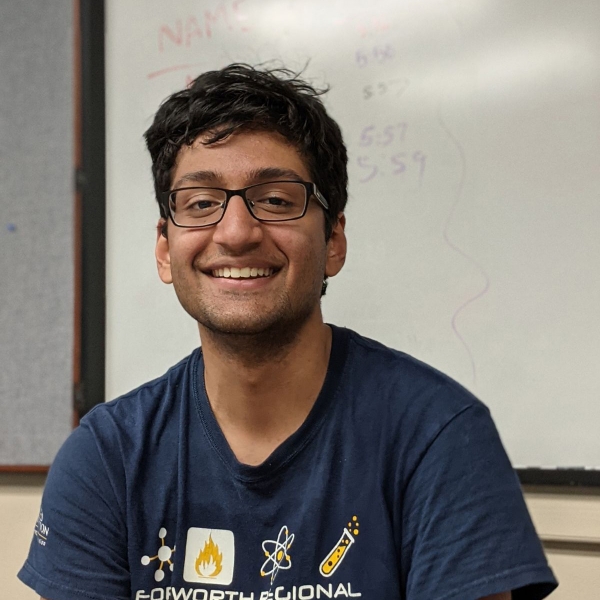
Major: Neuroscience and Behavior
Research topic: My project focuses on a gene called ALFY, which is important for breaking down misfolded proteins. Researchers have noticed that in many neurodegenerative diseases (like Parkinson’s or Alzheimer’s) such misfolded proteins tend to accumulate. We studied the brain and spinal cord of a mouse that does not have the ALFY gene in order to simulate the conditions of these diseases and the effects they would have on different proteins across the nervous system.
Why I chose it: I was drawn to this idea because I have done some neurodegenerative research in the past, and this research is up my alley. My great-grandmother suffered from a neurodegenerative disease, so I know how earth-shattering these diseases can be.
Biggest takeaway: We found an elevated level of neuroinflammation in ALFY-removed mice and received the green light to move to a more advanced technique, 4i, to study these mice. With this, we can get exact spatial coordinates of where certain biomarkers are in the tissue, which would let us know how different markers compare.
Nicole Xiao CC’26

Major: Climate Systems Science and Statistics
Research topic: Dendrochronology, which is the study of tree rings, specifically in the context of tree-ring dating. However, scientists have also been able to use tree rings to aid in climate change research, as the rings can provide a record of the surrounding region’s past climate and temperature. This project analyzed tree-ring data from Douglas firs across mountainous regions of Mexico and aimed to create the first database of its kind focused on these particular trees in Mexico.
The research explored the creation of 10–15 tree-ring records of summer temperatures for Mexico, dating to at least 1500 CE. These records will become part of the continental-scale North American Temperature Atlas, now under development at the Lamont-Doherty Earth Observatory’s Tree Ring Lab. This research will help serve a heavily underrepresented section of the climatic history of North America and fill in gaps of the paleoclimate record of the Mexican peninsula. Forward-projecting climate models can also be created to help predict and analyze future temperatures from this project.
Why I chose it: As a high school senior, I spearheaded a research project on dendrochronology and its various uses as part of my dual-credit environmental science course. I met with Professor Grant Harley at the University of Idaho, where he introduced me to forward climate modeling (climate projections that demonstrate and analyze future temperatures and climate records) and how dendrochronology can be of use. I was fascinated by this — using tree rings to both unlock a window from the past and get a glimpse of the future. I’ve always been interested in the nexus of science and policy, and how we can translate data and research into effective policy. This project, made possible by the Comer Foundation’s Comer Fellowship Program, was the ideal research opportunity to better understand how real-time climate research is conducted, analyzed and put to use.
Biggest takeaway: Earth goes through cycles of drastic temperature change; the Ice Age and the Medieval Age are two vastly different periods of Earth’s climate record. Yet, as the research shows, since the start of the Industrial Age, there has been an unprecedented uptick in carbon emission levels, leading to the realization that anthropogenic activity does and will continue to have an impact on global temperatures. This is not a phase; this is unprecedented change. Seeing the climate models on the screen as a scientist, and not just a citizen, was jarring and disheartening, but also invigorating. More drastic work needs to be done to avert the worst of the climate crisis.
Additionally, research can be a bubble, especially because the rigorous and painstaking research process can make academia operate incredibly slowly. Government and policy spaces tend to move at a much faster pace. It is critical that scientists and policymakers meet halfway and collaborate to incorporate the latest research into climate policies.
Mira Mason CC’25

Major: English, Gender Studies (double major)
Why I chose it: I’m researching Julian Eltinge, the highest-paid actor of the 1910s and one of the first people to be called a “transvestite” in the English language. By studying his incredibly successful career as a female impersonator, I hope to better understand the history of transness.
Why I chose it: As a trans woman, I was immediately curious about Eltinge when I heard about him in one of my classes. I wanted to know if there was someone like me who was able to be super successful so far in the past, all the more so because no one really remembers him anymore. Even my first bit of research uncovered a ton of interesting stuff: He was more famous than Charlie Chaplin at the peak of his career, he built his own Broadway theater, he was one of the first celebrities to build a custom mansion in Los Angeles.
As I continued researching, I found equally intriguing, if less positive, facts: that he despised effeminate performers, that he performed in blackface, that he increased intrigue about his impersonation by fetishizing and dehumanizing his Japanese butler, Shima. I ended up discovering a figure who informs the history of transness in equally complicated and important ways.
Biggest takeaway: How exciting original research can be. Although it’s a little scary to research such an obscure figure, it was also incredibly rewarding to find and consider historical artifacts that no one has written about!
Pablo Torres Rey CC’25

Major: Economics and Mathematics
Research topic: This past summer I was a research assistant for Mauricio Cárdenas, director of the MPA in Global Leadership at SIPA and Colombia’s former finance minister. During my first weeks, I mostly did literature reviews of the economic dimensions of climate change and some of the global efforts that governments have agreed to in the framework of climate finance. I wrote a note for Professor Cárdenas, “The Macroeconomic Effects of Climate Action,” which focused on understanding how emerging markets and developing economies (EMDEs) suffer burdens that stem from industrial policies that advanced economies are implementing. This note evolved toward a paper in the next few weeks, as I started delving into the current state of adaptation, mitigation and other efforts in EMDEs. The most important relationship we studied, however, was the one between climate change and global inequality. We were able to suggest that without proper action, climate change is likely to reverse progress done in the reduction of global inequality in the short term.
Why I chose it: As an aspiring economist and mathematician with a concentration in sustainable development, I wanted to be more exposed to the elements behind the macroeconomic impacts of climate change.
Biggest takeaway: This kind of analysis was fruitful because it depended on statistical analysis and macroeconomic trends, as well as normative analysis. While I was able to fully participate in the publication of a paper, I also understood how to convey an argument clearly and concisely, which is a perspective that is sometimes lost in academia when papers become daunting to read.
As this project finished, I started analyzing information for a new paper on the paths for climate action collaboration between two blocs: Europe, and Latin America and the Caribbean. This led to the study of cross-continental green incentives, as well as to identifying opportunities for joint climate action for both blocs, which led to us writing a paper that was presented to the ministers of EU and LAC at a conference. While not directly connected with my research, I was able to work with an NGO during the summer in the Brazilian Amazon, getting to know their conservation efforts with local communities in the basin of the Rio Negro.
Pranay Talla CC’24
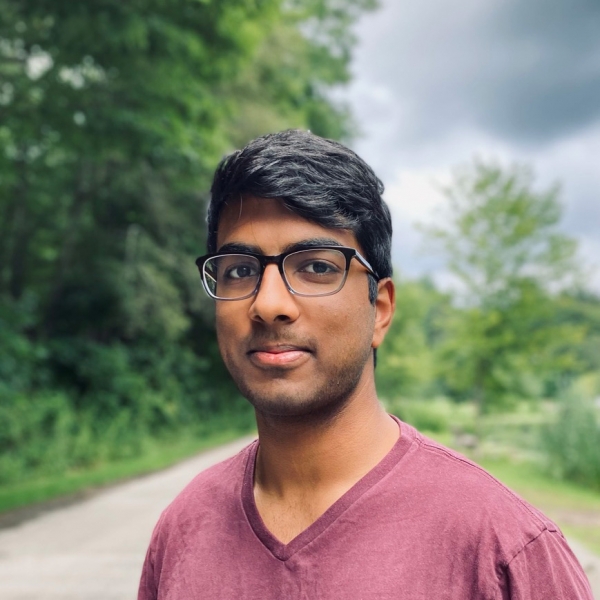
Major: Biochemistry; Computer Science-Mathematics (double major)
Research topic: Proteins govern almost all metabolic and regulatory processes in the cell. In order to get a holistic view of the molecular interactions and protein irregularities involved in any interesting biological process or in disease, we need a technology that can identify and count all the proteins in each cell of any given tissue. My project aimed to solve this problem by developing a novel workflow of technologies such as mass spectrometry, laser microdissection, multiplexed imaging and AI-based image segmentation/registration. The outcome was a workflow that, given a piece of tissue, can generate a 3D computer model of said tissue that contains all the proteins in the tissue to single-cell-level precision. We applied this workflow to examine how different types of cells interact within a few different 3D environments, such as the liver and melanoma tumors.
Why I chose it: This past summer, I worked at the Max Planck Institute of Biochemistry (MPIB) in Munich, supported by Columbia’s I.I. Rabi Scholars Program. Having already gained experience in single-cell genomics and transcriptomics research at Columbia, I wanted to continue to learn about research in other “omics” fields. So, at the MPIB, I joined the lab of Professor Matthias Mann, a leader in the field of spatial proteomics.
Biggest takeaway: One of my biggest takeaways was an appreciation for the interdisciplinary nature of this research. On one hand, I learned how to use complex wet lab equipment such as a mass spectrometer; on the other, I gained experience in developing my own AI software tools to do image and data processing. I also greatly appreciated the opportunity to learn from world-class scientists and physicians, as well as the opportunity to experience German culture as a whole for the first time.
Mrinalini Sisodia Wadhwa CC’24
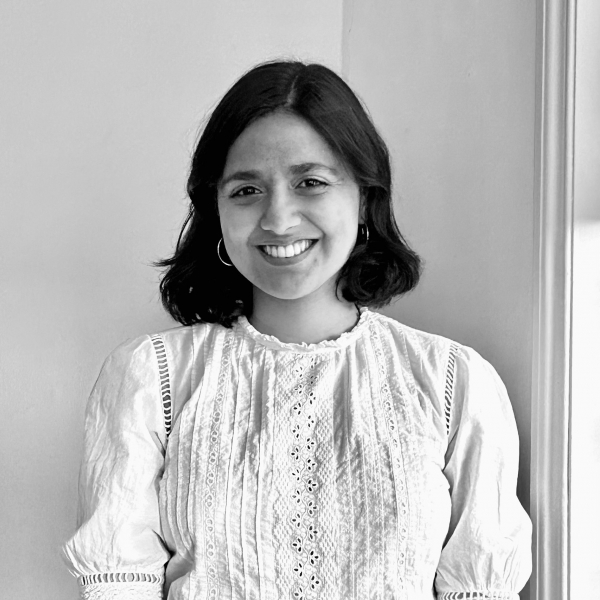
Major: History; Mathematics (double major)
Research topic: My project explores how women’s rights activists negotiated political representation in India’s last colonial constitution of 1935. In this period — as a response to rising pressures from Indian nationalists, social reformers and minority rights activists — the British government organized a series of conferences in London to bring together representatives of these different groups to write a new constitution for British India, in which “native” subjects could (in a limited way) shape domestic policy by serving on local legislative assemblies.
One of the key issues was whether to adopt “reservations” — i.e., reserved assembly seats for politically marginalized groups such as women, religious minorities or lower-caste Indians. The reservations issue divided the women’s movement, with some activists arguing that reservations were necessary to ensure women could advance a social reform agenda on issues like marriage and property rights, and others claiming that they violated the goal of “national unity” that superseded women’s individual claims.
I look at the papers of a small group of women that was selected to represent the major Indian women’s organizations at the London conferences, tracing how they formed alliances with members of the Indian nationalist movement and British parliamentarians and women’s activists to advance their position on reservations.
Why I chose it: My interest in this topic began in 2020, after my aunt gave me a copy of Ramachandra Guha’s India After Gandhi — one of the earliest surveys of post-Independence Indian history — when she found out I wanted to study history in college. While in national lockdown in New Delhi, I finally began reading the book, which opens with a description of how the framers of India’s constitution dealt with the issue of minority reservations, setting a kind of blueprint for debates over political rights in other Asian and African newly independent countries.
While it presented an intricate account of debates over reservations on the basis of caste, religion and tribal status, it dismissed the idea of reservations on the basis of gender, declaring that Indian women, “infected early with the spirit of national unity,” had “never” sought reservations. I was struck by this claim. Had women really never looked to reservations to represent their interests in local government, or was a nationalist vision crowding out their perspectives and experiences?
When I began at the College in fall 2020, I took Professor Susan Pedersen’s “History of Twentieth-Century Britain” lecture class, where at one point we looked at the writings of Eleanor Rathbone, a British parliamentarian who had been involved in the women’s suffrage movement. As it turns out, Rathbone was actually involved in these colonial-era women’s reservations debates, urging the Indian women’s activists to push for reservations rather than keep to the nationalist by-line! I grew very interested in mapping out this issue and was fortunate to have the chance to pursue this project this past summer at the London School of Economics’ Women’s Library and the British Library in London, and the Nehru Memorial Museum and Library in New Delhi, under Professor Pedersen’s supervision.
Biggest takeaway: I went into this project expecting to study a political history of how these women understood and debated political representation within the power structures of the nationalist movement in India and the British Empire, but ended up encountering so much more. On a high level, the archival materials I looked at made it clear that claiming the Indian women’s movement never sought reservations and was totally aligned with the goal of nationalist unity was misleading. Some women activists were especially concerned that identifying with the nationalists would dilute their claims to political representation and social reform, and even those who did ultimately align with the nationalist byline were motivated by religious and political concerns.
It was also incredible to see the intensity of some of the relationships formed between these women and their interlocutors, some of whom they would have only met for a few fleeting hours in London in the 1930s. “Please let us keep in touch,” Agatha Harrison wrote to Rajkumari Amrit Kaur, the appointed representative of the All-India Women’s Conference, in one of the letters; “every now and then in life one meets a friend whose presence in a tangled world seems to bring new life and hope.” That line will stay with me long past the completion of this project.